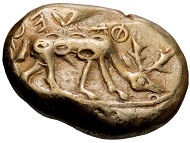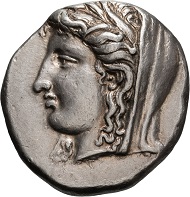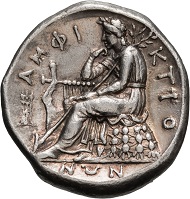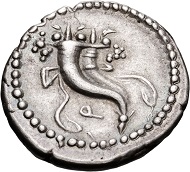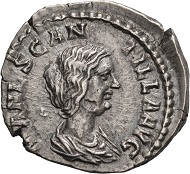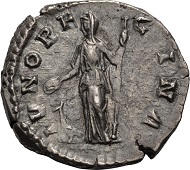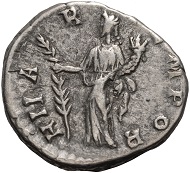28-09-2016 – 01-01-1970
199th Buy or Bid Sale
Harlan J. Berk’s 199th Buy or Bid Sale
Harlan J. Berk is holding their 199th Buy or Bid Sale closing on September 29, 2016. It consists of 399 ancient coins, 41 world coins & 56 antiquities and antique maps. Here are a few highlights of the sale:
Lot 5: Ionia, Ephesus, Phanes EL trite.
- Lot 5: Ionia, Ephesus, Phanes EL trite. This excessively rare type is one of the earliest of all ancient coins. Aside from being an early type, it is also the first time that an individual put their name on a coin. While history has not bestowed any further information on Phanes and who he was, this piece is nonetheless remarkable.
- Lot 8: Caria, Cos, EL hekte. The crab is common imagery to the coins of Cos, however, one is more likely to see this on silver coinage. Our coin, a rarity in electrum, features prominently the crab of Cos. Undoubtedly the crab was adopted as the badge of the city as the geographic location of Cos is right on the coast. A fascinating early coin.
- Lot 9: Axumite Kingdom, Endubis, AV unit. The Axumite kingdom was located in the area where Ethiopia exists on the African continent. Axum developed into a prominent kingdom by the 1st century AD due to its advantageous location between the Roman Empire and India. Because of their position of power they began to strike currency. One person of interest said to be from the Axumite Kingdom is the biblical Queen of Sheba.
- Lot 33-38: Calabria, Tarentum. A lovely small group of coins from Calabria, many of which are from illustrious collections and/or plate coins from Vlasto.
Lot 80: Phocis, Delphi, Amphictionic Council, Aeginetic stater.
- Lot 80: Phocis, Delphi, Amphictionic Council, Aeginetic stater. In 336 BC the Amphictions (“the dwellers round about”) decided to mint a special coinage. Earlier in 373 BC the sacred temple containing the famous oracle of Apollo at Delphi had been destroyed either by fire or earthquake; a Phocian occupation had taken place and the sacred treasury was dispersed as payment for mercenaries. From 346 to 336 the treasure was restored by annual payments of the Phocian indemnity. In 336 the Amphictions decided to melt down all of the miscellaneous and obsolete coinage that had been donated over the ten preceding years. Before melting, the coins were divided into groups according to their fineness, as fragmentary surviving records in stone still attest. A new coinage was minted in the name of the Amphictionic Council. These coins rarely show any wear, meaning they were special and ceremonial. They were a singular one-time issue.
- Lot 105: Elis, Olympia, stater. This coin is presumed to be Ex Arthur Evans Collection by the accompanying older ticket. A very attractive example.
- Lots 107-110: A small group of Mithradates tetradrachms. This phenomenal type is prized as one of the more attractive coins of the Greek series. A flowing head showcasing the mighty ruler Mithradates and a stag within an ivy-wreath makes this a beautiful type.
Lot 138: L. Sulla, denarius.
- Lot 138: L. Sulla, denarius. Lucius Cornelius Sulla Felix is considered one of the more well-known Roman generals and statesman. He was a predecessor to Julius Caesar and was the man who brought dictatorship back to Rome.
- Various lots from 135-180. From the E.E. Clain-Stefanelli Collection. The Clain-Stefanelli’s were academic numismatic historians and also both authors and curators. They worked at a variety of numismatic firms from Santamaria, Stack’s and Hesperia and finally as curators at the Smithsonian where they practically doubled the numismatic collection.
- Lot 204: Hadrian, denarius. A nice example from the “travels series” of Hadrian.
Lot 246: Manlia Scantilla, denarius.
- Lot 246: Manlia Scantilla, denarius. Wife to the short-lived emperor Didius Julianus and …
Lot 247: Didia Clara, denarius.
- Lot 247: Didia Clara, denarius. The daughter to the short-lived emperor Didius Julianus. 193 AD was a critical time in the period of the Roman Empire. In quick succession five different rulers tried to take power: Pertinax, Didius Julianus, Pescennius Niger, Clodius Albinus and Septimius Severus. In the end Septimius persevered and held the post for another 18 years. Manlia and her beautiful daughter Didia Clara had the honor of being minted on coins but their presence in a position of power was fleeting, lasting only a few short months.
- Lot 292: Paulina, Diva, denarius. A spectacular example of this attractive type with a peacock spreading its wings on the reverse.
- Lot 390: Theodosius II, light miliarensis. A beautiful example in silver with a notable pedigree (Sotheby, 9 October 1995, lot 342).
To browse the entire Buy or Bid Sale, please click here.




